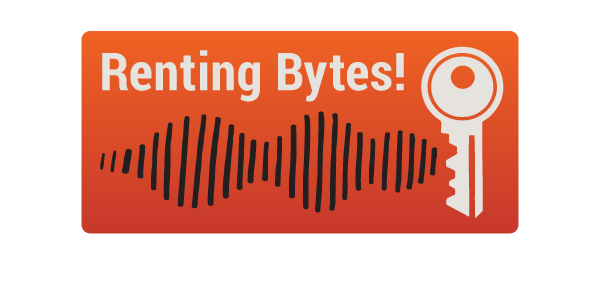Census 2021: Renters are the fastest growing tenure in Australia.
Jemima Mowbray • 04/07/2022
Leo Patterson Ross; Jack Moon; Zuzia Buszewicz
Last week the Australian Bureau of Statistics (ABS) released its first round of data from last year's Census (2021). This is the key population data collected on Census night, though some really interesting data on mobility and tenure will be released with other 'additional location variables and employment data' due out in October - we'll also then get the ability to dive in more fully to the data. We'll be looking at the 2021 Census data and sharing the insights as they are made available. In this blog, we get started with a few headline results about renting in NSW.
The number of people renting their homes is growing
Let's start by looking at the overall number of people renting in NSW. The ABS 2021 Census data released last week reveals the number of people renting their home has grown significantly over the last few years. Renters are the fastest growing tenure type in Australia. The number of renting households in NSW has increased by over 17.5% since 2016.
While the census now tells us renters make up close to a third of all households in NSW, people who rent their homes are still often left out of the conversation about how to fix our housing system. Governments need to listen to renters – about their experiences renting and their concerns. But also about what is needed to fix these problems.
The vast majority of renters are renting in the private rental market. Census 2021 tells us that over 2 million people rent in the NSW private rental market. Everyday renters in the private rental market face soaring rents and high energy bills. They also live with the chronic insecurity that has been allowed to become a feature of renting your home in NSW. And as we've previously reported, this insecurity of tenure comes with a significant financial hit: each time renters are forced to move we estimate it costs them on average around $4,000.
The proportion of people renting from a social housing provider is reducing
At odds with the growing number of people renting overall, the number of people reporting renting from a public or community housing provider has gone backwards. The number of households reporting they rent their homes from a public or community housing provider has fallen by more than 1500
Unfortunately while we see the number of people renting increase, Census confirms what we already knew - the number of people living in public or community housing in NSW continues to drop. This is not because of reduced need. The waiting list for public and community housing is many years long: we just don’t have the homes required.
While the Census data above relating to the number of people who report renting from a provider relies on self reporting, and so is less reliable in terms of actual numbers, the trend identified - that of dwindling social housing stock is backed up by other available data regarding social housing. Data released last week by the Australian Institute for Health and Welfare (AIHW) shows last year the number of social housing units in Australia rose by less than 1%. Social housing – public and community housing dwellings – was stuck at 4.2% of overall housing stock. In NSW, we stayed at 4.7% of all housing stock, with all of the increase coming from a small increase of stock in community housing.
The continued lack of investment in public and community housing by governments has a flow-through impact on those in the private rental market. And while the waiting list sits at around 50,000, we also know the waiting list doesn’t reflect the extent of need in the community.
Stress is growing
The 2021 Census data tells us the number of households in NSW paying more than 30% of income on rent has increased by 21,107 from 314,297 in 2016 to 335,404 in 2021. However this includes people from across all income range - and the experience of paying 30% or more of your income on rent is very different at higher income levels (though it's also much less likely to happen) - which means it's not directly comparable to unaffordability measures that use the "30/40 rule" which considers stress to be only for the lowest 40% of incomes.
It's worth noting though that this method (the "30/40 rule") for measuring affordability is a bit dicey. Firstly, it can mean that people on very low incomes might be able to scrape in under 30% but are still left without enough to live a decent life.
We could instead use the 'residual income' method of unaffordability which looks at the resources a person or household has to live on after their housing costs. This better captures the kinds of sacrifices people face when rents are allowed to rise too high. But importantly, it also shows why despite rents set in accordance with the 30/40 rule many people in public and community housing still face significant pressures on the household budget. Under the residual income measure, 69% of public housing tenants in 2011 were found to be left without enough to live on even on a "low cost budget standard". We expect an even higher result today if the research were replicated - something we hope to do once the full census results are released later in the year.
The good news - we fixed this during COVID where the Jobseeker supplement lifted people's income to the poverty line but importantly, the NSW government ensured both public and community housing rents in NSW were not increased. Rather than 25% of income, for people on Jobseeker rents became a more reasonable 12.5% - without even reducing the rent collected by the provider. This allowed tens of thousands of households to finally have enough money to take care of themselves and their families.
Compare this to the AIHW data which tells us in NSW 227,000 households receiving Commonwealth Rent Assistance are still left in rental stress (on the 30/40 rule) after receipt of CRA. That's nearly half of all NSW CRA recipients and the figure has risen by more than 50,000, or a 30% increase, since 2019's pre-COVID results. That's an increase in stressed households as big as the whole NSW waiting list!
We note though that this appears to include CRA-receiving community housing tenants who routinely pay 40-50% of their gross income on rent - another aspect of the 30/40 rule which misleads as the real experience.
A better approach needed
The 2021 Census data released tells us a significant proportion of our community are renters. Housing is essential to health and wellbeing, and the current inadequacies of the NSW rental housing system are taking a toll on renters. Governments need to listen to renters about what needs to be fixed in our broken rental housing system.




